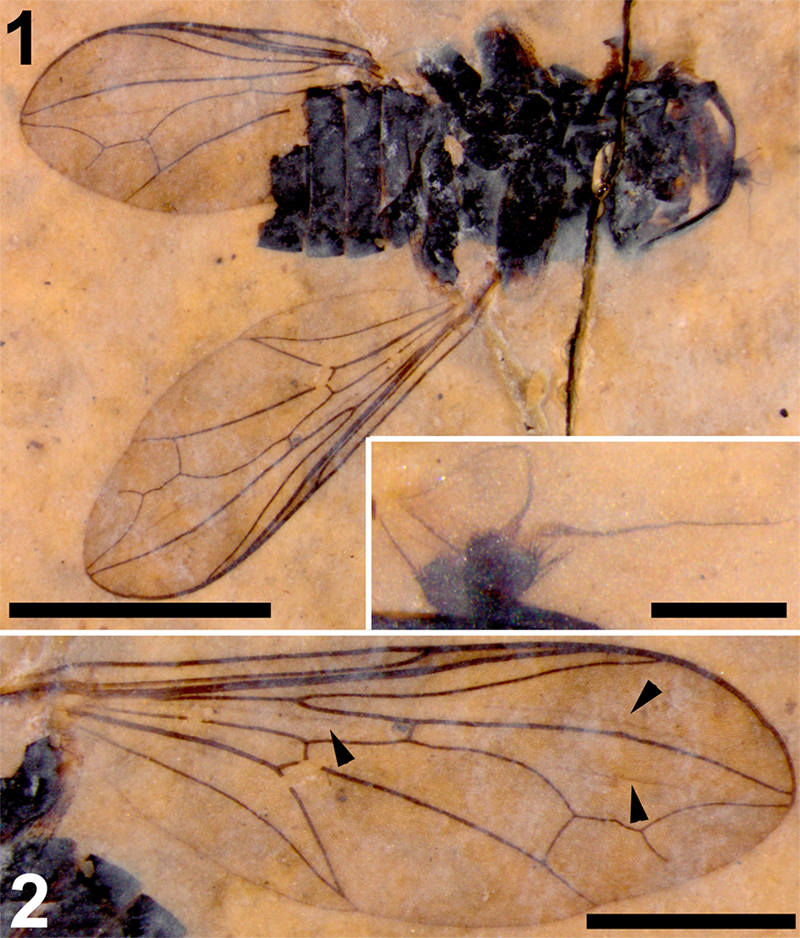FIGURE 1. Tipula (Trichotipula) fji sp. nov., USNM 625687, male. 1, Habitus; 2, Posterior portion of the abdomen showing aedeagus; 3, Terminalia; 4 Halter; 5, tarsal claws. The arrows point to the front tarsal claw (left) and the terminal tarsomere of either the middle or back leg (right). Scale bars equal 10.0 mm (1), 2.0 mm (2) and 0.5 mm (3 - 5), respectively.

FIGURE 2. Tipula (Trichotipula) fji sp. nov., USNM 625687. 1, Head. Arrow denotes palpus; 2, Antennae. Arrows denote boundaries between basal flagellomeres, double arrows point to verticils at the base of the terminal flagellomere. Scale bars equal 1.0 mm (1) and 0.5 mm (2).

FIGURE 3. Tipula (Trichotipula) fji sp. nov., USNM 625687. 1, The apical half of the right wing; 2, Detail of vein Sc. The arrow denotes the terminus of Sc, the arrowhead points to a dislocation of a portion of Rs; 3, Detail of anterior radial veins. The arrows point to R1 and the second abscissa of R2 (left and right respectively) and the arrowhead denotes the first abscissa of R2. Scale bars equals 1.0 mm (1), 0.3 mm (2) and 0.5 mm (3).

FIGURE 4. Ellipteroides (Ellipteroides) kishenehn sp. nov., USNM 621123. 1, Habitus; 2, Left wing; 3, Line drawing of left wing; 4, Antennae and palpus. Arrow points to palpus. Scale bars equal 2.0 mm (1), 1.0 mm (2) and 0.5 mm (3).

FIGURE 5. Cyttaromyia lynnae sp. nov., USNM 621109.1, Habitus. Inset: details of venation, right wing. Arrow points to the r'-m' crossvein; 2, Left wing; 3, Line drawing of left wing. The dotted line represents a fold in the postero-basal portion of the wing. Scale bars equal 10.mm (1), 0.5 mm (Inset) and 2.0 mm (2).

FIGURE 6. Cyttaromyia lynnae sp. nov., USNM 621109. 1, Antenna and palpus, arrow denotes the 5th segment of the palpus; 2, Genitalia; 3, Mesosoma. Scale bars equal 1.0 mm (1), 0.5 mm (2, 3).

FIGURE 7. Cyttaromyia fuscula Cockerell, 1921 (new combination), USNM 66572. 1, Wing. Arrow points to a defect in the wing where the distal portion of the wing has shifted anteriorly relative to the basal portion causing an upwards curving of the basal portion of Rs; 2, Line drawing of the wing. Scale bar equals 3.0 mm (1).

FIGURE 8. Bruchomyiinae sp., USNM 619952. 1, Right wing; 2, Drawing of the right wing. Scale bar equals 1.0 mm (1).

FIGURE 9. Sylvicola silibrarius sp. nov., USNM 626077. 1, Habitus; 2, Right wing. Inset: Left wing macrotrichia from area proximal of Sc terminus; 3, Line drawing of right wing. Scale bars equal 3.0 mm (1), 1.0 mm (2).

FIGURE 10. Sylvicola silibrarius sp. nov., USNM 626077. 1, Head and antennae. Arrow denotes terminal palpomere. Arrowhead points to occipital bristles; 2, Terminalia, female. Arrow denotes the spermatheca. Scale bars equal 1.0 mm (1) and 0.25 mm (2).

FIGURE 11. Sylvicola silibrarius sp. nov., USNM 621508. Paratype.Scale bar equals 2.0 mm.

FIGURE 12. Efcookella nigra sp. nov., USNM 618088. 1, Habitus. Inset: antennae, asterisk denotes the pedicel; 2, Left wing. Arrows mark the R5-M1 cross vein; 3, Line drawing of wing. Scale bars equal 1.0 mm (1), 0.1 mm (Inset) and 0.5 mm (2).

FIGURE 13. Reichertella fasciata (PU-6943; USNM 112563). Left wing. White arrows denote the medial and cubital forks. Inset: habitus; black arrows denote bristles. Scale bars equal 2.0 mm.

FIGURE 14. Bibiodes kishenehnensis sp. nov., USNM 625738. 1, Habitus (ventral aspect); 2, Right wing showing the fusion of Rs and M; 3, Line drawing of the right wing. Scale bars equal 3.0 mm (1) and 1.0 mm (2).
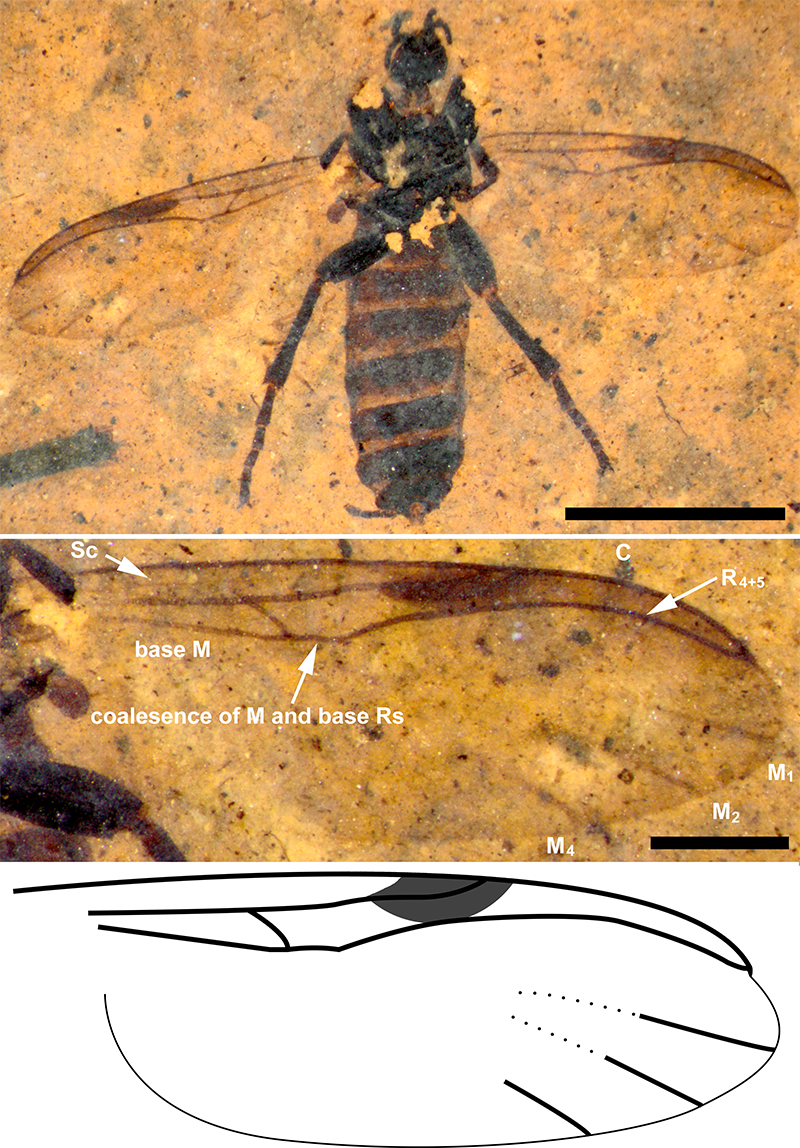
FIGURE 15. Bibiodes kishenehnensis sp. nov., USNM 625738. 1, Head. Arrowhead points to the antenna; arrow points to the terminal palpomere; 2, Genitalia; 3, Left metatibia and tarsi. Arrow points to the tibial spur. Scale bars equal 0.5 mm (1, 2, 3).

FIGURE 16. Eosciarites hermes sp. nov., USNM 624633. 1, Habitus; 2, Right wing, arrow points to the halter; 3, Line drawing of the right wing. Scale bars equal 1.0 mm (1) and 0.5 mm (2).

FIGURE 17. Eosciarites hermes sp. nov., USNM 624633. 1, Head, arrow points to the labellum; 2, Tibial spur of foreleg (left arrow) and tibial spur of midleg (right arrow). Arrowheads denote a small dark patch of setae; 3, Terminalia, female. Arrow and arrow head denote the two-segmented cercus and sternite 10, respectively; Scale bars equal 0.3 mm (1) and 0.5 mm (2, 3).

FIGURE 18. Sciara florissantensis Cockerell 1916, USNM 61995. 1, Habitus; 2, Head and antennae; 3, Right forewing. Long arrow denotes 1st abscissa of Rs; the arrowhead points to remnants of the r-m crossvein. Scale bar equals 1.0 mm (1, 3), 0.25 mm (2).

FIGURE 19. Sciara gurnetensis Cockerell, 1915, USNM 61435 and S. lacoei Cockerell, 1915, USNM 61436. 1, Sciara gurnetensis (wing only). M1 and M2 labeled; 2, S. lacoei, habitus. CuA1 and distal portion of M2 labeled. “Veins” under each of the three asterisks are artifacts; the “?” denotes the vein Cockerell identified as M1. Inset: Head (Arrow points to base of antenna); 3, S. lacoei, (#7583). M1 and M2 labeled. Scale bars equal 1.0 mm (1, 2, 3).

FIGURE 20. Sciara protoberidis Cockerell 1915, USNM 61437; Habitus. Distal portions of M1 and M2 labeled. Scale bars equal 1.0 mm.

FIGURE 21. Rymosia hypnolithica sp. nov., USNM 624134, male. 1, Habitus; 2, Right forewing. Scale bars equal 2.0 mm (1), 1.0 mm (2).

FIGURE 22. Rymosia hypnolithica sp. nov., USNM 624134, male. 1, antennae; 2, Spines and spurs of the legs; 3, Terminalia. Abreviations: lf, lm, lh, rm and rh are left front, left mid, left hind, right mid and right hind legs respectively. Scale bars equal 0.25 mm (1, 3) and 1.0 mm (2).

FIGURE 23. Litoleptis araeostylus sp. nov., USNM 624657. 1, Habitus. Upper inset: Arrows denote the thin termini of the arista. Lower inset: genitalia, arrow denotes boundary between segments of the cercus; 2, Left wing, arrow points to the halter; 3, Line drawing of left wing. Scale bars equal 1.0 mm (1), 0.10 mm (insets), 0.50 mm (2).

FIGURE 24. Rhagio fossitus Melander, 1949. USNM 112626. 1, Habitus; 2, Right wing; 3, Line drawing of right wing. Scale bars equal 5.0 mm (1) and 1.0 mm (2).

FIGURE 25. Kishenehnoasilus bhl gen. et sp. nov., USNM 624491, female. 1, Habitus; 2, Wings; 3, Drawing of wing (composite). Scale bars equal 5.0 mm (1) and 2.0 mm (2).

FIGURE 26. Kishenehnoasilus bhl gen. et sp. nov., USNM 624491, female. 1, Terminalia; 2, Proboscis, arrows point to the distiproboscis; 3, Legs. Scale bars equal 0.5 mm (1) 1.0 mm (2) and 2.0 mm (3).

FIGURE 27. Salishomyia eocenica sp. nov., USNM 622501. 1, Habitus; 2, Right wing. Scale bars equal 1.0 mm (1) and 0.5 mm (2).

FIGURE 28. Drapetis adelomedos sp. nov., USNM 621705. 1, Habitus; 2, Right wing. Arrowhead and arrow denote r-m and m-cu cross veins respectively; 3, Line drawing of wing. Scale bars equal 2.0 mm (1) and 0.5 mm (2).

FIGURE 29. Drapetis adelomedos sp. nov., USNM 621705. 1, Antennae. Arrow denotes a row of setae at the apical margin of the pedicel and arrowheads point to setae on the arista; 2, Head. Arrow denotes two occipital bristles. Arrowhead points to setae at base of proboscis; 3, Hind leg and terminalia. Arrowhead points to posteroventral femoral spines; four small arrows denote short setae on the hind femur; large arrow points to the claws. Scale bars equal 0.25 mm (1), 0.2 mm (2, 3).

FIGURE 30. Agathomyia eocenica sp. nov., USNM 553697. 1, Habitus; 2, Left wing; 3, Wing of extant species Agathomyia antennata. Scale bars equal 2.0 mm (1) and 1.0 mm (2). Inset: Apical terminus of R4+5 at costa (right wing).

FIGURE 31. Agathomyia eocenica sp. nov., USNM 553697. 1, Terminal part of abdomen; 2, Legs. Arrows point to three tarsi of the front and middle legs; 3, Hind leg; 4, Head. Long arrow denotes apical marginal setae of the pedicel, short arrow denotes several basal aristomeres - the terminal aristae are missing. Inset: Labellum with postero-ventral setae. Scale bars equal 0.5 mm (1), 1.0 mm (2) and 0.25 mm (3, 4).

FIGURE 32. Lonchoptera eocenica sp. nov. USNM 625379. Scale bar equals 2.0 mm.
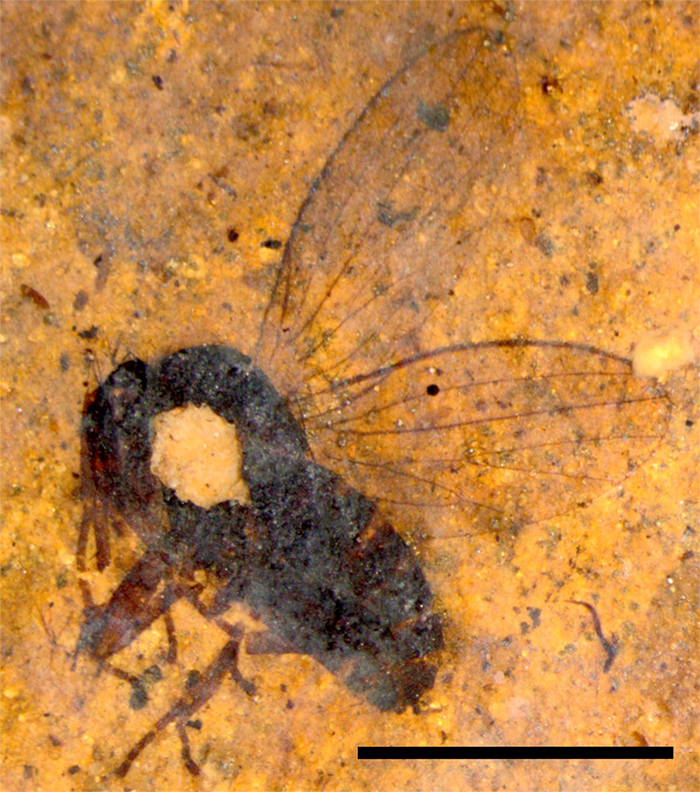
FIGURE 33. Lonchoptera eocenica sp. nov. USNM 625379. Close-up of wing.

FIGURE 34. A thin plate spline analysis demonstrates the direction of the changes from fossil to modern wing veination. 1, Wing of modern Lonchoptera sp. (from the Puyehue National Park, Chile), showing placement of landmarks; 2, Expansion (red) and compression (blue) of wing venation of a modern species of Lonchoptera relative to Lonchoptera eocenica. Basal, left; distal, right. Base of lines represent fossil landmark; dots at tips of lines represent modern landmark.
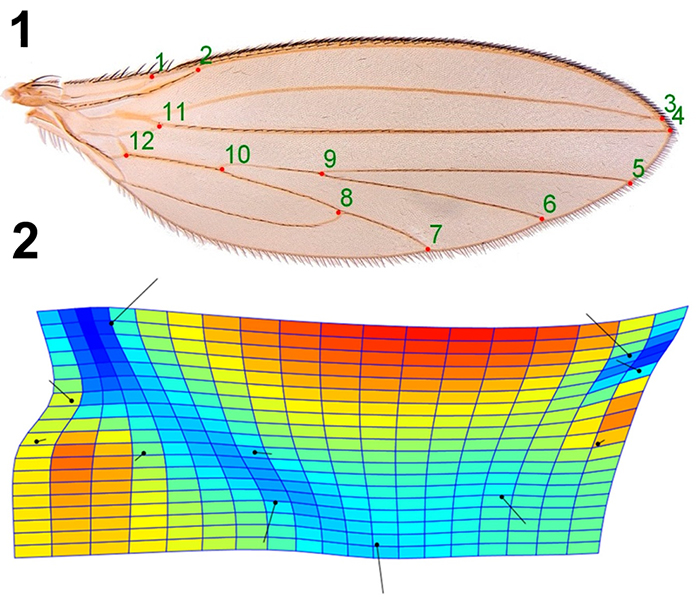
FIGURE 35. Aenigmatias kishenehnensis sp. nov., USNM 625132. 1, Habitus; 2, Terminalia, (bts = blunt thick setae); 3, Terminalia of an extant female Aenigmatias sp. Scale bars equal 1.0 mm (1) and 0.2 mm (2).
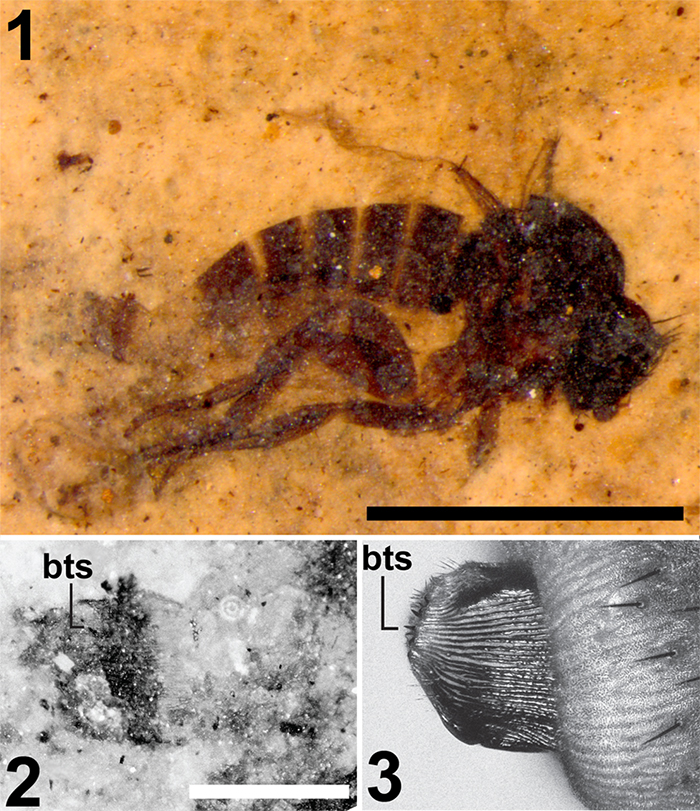
FIGURE 36. Pipunculidae sp. USNM 625934. 1, Habitus. Inset: antennae; 2, Left wing. Arrowheads denote spurious veins; Scale bars equal 2.0 mm (1), 0.25 mm (inset) and 1.0 mm (2).
